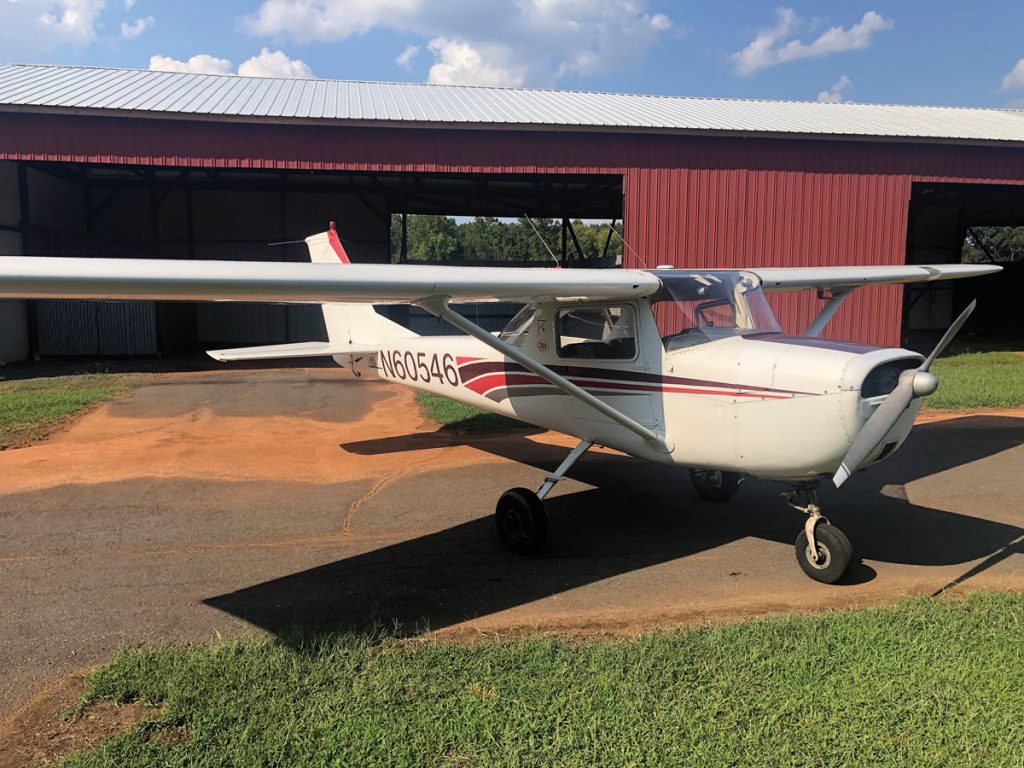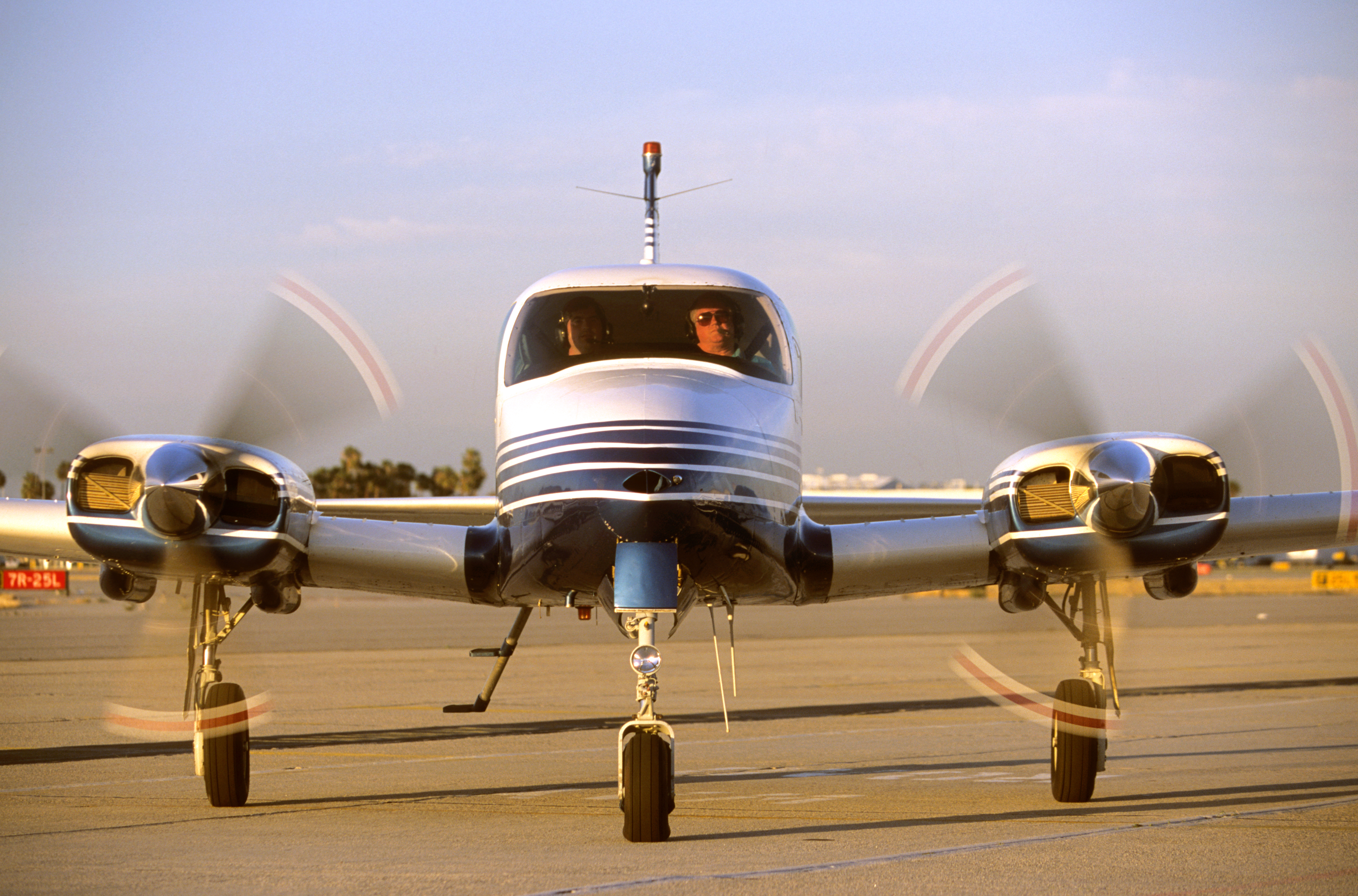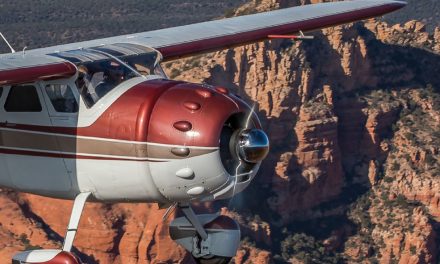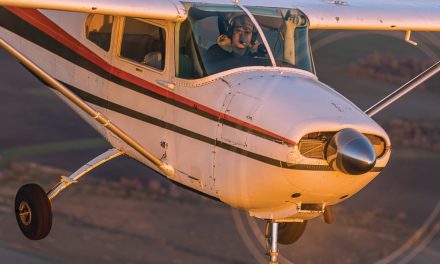
Photo credit: Johann Alexander
By Dan Brownell
In-Depth Reviews and Advice from 150/152 Owners
The Cessna 150 and 152 are ideal for training because they’re simple to fly and relatively inexpensive to operate, maintain, and insure. However, their strengths are also their greatest weakness. Their light weight and small size, which makes them so economical, also greatly limit their fuel, passenger, baggage capacity, and range. Also, because they have often been used for training, they’re more likely to have sustained above average wear and damage over their lifetime. As with any plane, regular documented maintenance and complete logbooks are a major factor in calculating value in buying and selling.
150/152 Reviews and Tips from COO Members
150/152 Pre-Purchase Tips
Michael Richardson, Greenville, Kentucky, 1976 150M
- Do a lien search.
- Find out how often the plane has been flown.
- Get a good pre-buy inspection.
Dario Marcoppido, El Palomar, Argentina, 1969 150J, 1976 150M
- It’s cheap.
- It’s rugged.
- It’s “the” trainer.
Marshall Patterson, Tuscumbia, Alabama, 1967 150G
Top priorities for buying a 150:
- It’s been kept mostly in a hanger.
- It’s never been used as a trainer.
- It has low corrosion.
Dennis Lilik, Lewes, Delaware, 1968 150H
- Make certain you enjoy flying a low, slow, and simple airplane to get yourself around.
- Be sure you’re able to bend your legs to get into the cockpit, as it is a tight squeeze.
- With two people aboard, you’ll have to manage the weight and balance with fuel.
Jerry LeCroy, Huntsville, Alabama, 1974 150L
- Get a good pre-buy.
- Look for corrosion, for any issues around the main landing gear attach structure, and for any wrinkles in the firewall.
- On these (or any other airplane), keep enough budget margin to cover costs when you discover deferred maintenance or undiscovered issues.
Alex Cywan, Camarillo, California, 1969 150J
- The 150 is slow in the climb. If you find yourself on an IFR flight plan, you won’t make most climb gradients.
- Most people say 5.5 gph at cruise. It’s more like 6-7 gph at cruise, and that’s to keep the cylinder head temps under control.
- The carb will ice up just taxiing to the runway. Taxi lean with carb heat on.
Sid Ege, Carlisle, Pennsylvania, 1968 150H
Check the engine, radios, and airframe.
Ronald Keating, Braintree, Massachusetts, 1972 150L
- Get a good pre-buy.
- Make sure it has good avionics.
Steve Tilford, The Villages, Florida, 1964 150D
Open up and examine everything. Go slow and look carefully, as parts can be expensive, and defects may be under the floor or out in the wings.
Carl Stidsen, Tolland, Connecticut, 1978 152 II
- Get a real pre-buy from a mechanic of your choosing, not a quickie $200 one from a mechanic who the seller “just happens to know.”
- Spend time analyzing the maintenance records. My mechanic spent over 60 billable hours bringing the logs into compliance during my first annual. The logs as returned were two to three times thicker (with required forms and certifications) than when he got them. The prop serial number in the log did not match the one on the plane.
- Fly the aircraft for a couple of hours by yourself (agree on remuneration up front if you don’t buy the aircraft). Let the bird talk to you during your first couple of solo hours.
How Does the 150/152 Compare?
Michael Richardson, Greenville, Kentucky, 1976 150M
Compared to other planes I’ve flown, my 150F was slightly lighter and simpler and, in some ways, easier to work on (in an assisted annual). The 1976 150M has more creature comforts, conveniences, improved panel layout, and alternator.
Dennis Lilik, Lewes, Delaware, 1968 150H
This is my first owned aircraft and I just love it for being cost-effective and a blast to fly.
Jerry LeCroy, Huntsville, Alabama, 1974 150L
A Cherokee 140 is slightly faster, but the 150 climbs much better at gross than a PA-28 and uses less runway for takeoff or landing. The 150 is slow and cramped compared to a 172. Two full-size men will quite fill the cabin and get you to or over MTOW. Hour for hour, there is probably no airplane less expensive to build time in than a 150.
Alex Cywan, Camarillo, California, 1969 150J 150 vs. 172/182
The 150 is economical on fuel in the sense that it doesn’t burn anywhere near the same amount of gas, but it will take you significantly longer to get where you’re going. It cruises at around 90 kts indicated at 2,600 rpm at 8,000 feet. Any higher and you’re full throttle cruising. A 172 and 182 can carry significantly more weight. My 150 has a 470-pound max payload. 135 pounds of fuel at full tanks, and I can carry myself and some baggage.
Sid Ege, Carlisle, Pennsylvania, 1968 150H Cessna 150 vs. Piper Cherokee 140
The Piper Cherokee 140 has more power and longer range but ends up costing more per flying hour than the 150. Also, the Cherokee 140 has issues with the wing spar.
Ronald Keating, Braintree, Massachusetts, 1972 150L 150/152 vs. Liberty XL2
The Liberty XL2 was faster, was IFR capable, and roomier.
Steve Tilford, The Villages, Florida, 1964 150D
All aircraft I’ve flown since the 150 weren’t as good as training aircraft as the 150. Cessna hit the nail on the head with this airplane. It’s strong, simple, economical, and can demo almost anything.
Carl Stidsen, Tolland, Connecticut, 1978 152 II 152 vs. 172
The 152 is a trainer and will teach or review something on every flight. The 172 is the family Chevrolet: comfortable, compliant, and not particularly demanding, but it can kill you if you work at it, don’t pay attention, or press the envelope.
What Should Always Be Upgraded/Restored on a Used 150/152?
Michael Richardson, Greenville, Kentucky, 1976 150M
The alternator, nose strut and nose strut linkage, and lightweight starter.
Dario Marcoppido, El Palomar, Argentina, 1969 150J, 1976 150M
The instruments. Replace vacuum for electric. Replace steam gauge engine and fuel instruments with digital.
Marshall Patterson, Tuscumbia, Alabama, 1967 150G
The 150 hp upgrade is wonderful. Update to modern avionics and ADS-B In and Out. The older aircraft with 40 degrees of flaps are great, and more fuel capacity is great.
Jerry LeCroy, Huntsville, Alabama, 1974 150L
Fly the airplane in rain, find the leaks, and fix them. Rain coming in the base of the windshield will wreck avionics. Expect to service or replace the starter coupling. Assume that the steering hardware in the nose gear needs reshimming to prevent shimmy, and if you detect shimmy, get it fixed at once.
Alex Cywan, Camarillo, California, 1969 150J
I put a GI 275 engine monitor in my airplane and CiES fuel senders. Knowing your fuel level and actual engine performance is critical. It prolongs the life of the engine.
Sid Ege, Carlisle, Pennsylvania, 1968 150H
A 150 should have good radios, a transponder, ADS-B if not already installed.
Ronald Keating, Braintree, Massachusetts, 1972 150L
Avionics, nose gear linkage, add oil filter, and lightweight starter.
Steve Tilford, The Villages, Florida, 1964 150D
The engine; without one, you’re nowhere. Make sure it’s already in prime shape or will be put in prime shape. Don’t skimp; it keeps you alive and makes the rest of the work worthwhile. After that, check the airframe for bushings, bearings, cables, etc. Then consider avionics and, finally, cosmetics.
Carl Stidsen, Tolland, Connecticut, 1978 152 II
The radio or radios.
What Is the Best Reason to Buy and/or Fly the 150/152?
Michael Richardson, Greenville, Kentucky, 1976 150M
Ease of maintenance, low operating costs, fun to fly at sunset or any other time, and easy manual towing in and out of the hangar, which is another cost savings.
Dario Marcoppido, El Palomar, Argentina, 1969 150J, 1976 150M
Operation and maintenance are cheap. After 50 + years, it’s still rugged and reliable.
Marshall Patterson, Tuscumbia, Alabama, 1967 150G
It’s small, easy to deal with, cheap to maintain, and has low insurance rates. Performance is OK for most uses.
Dennis Lilik, Lewes, Delaware, 1968 150H
The dollars and cents saved.
Jerry LeCroy, Huntsville, Alabama, 1974 150L
The 150 is a quintessential trainer. Maybe 4 gallons per hour, and really no bad flight habits. I did all the training for my IFR rating and a lot of hard IMC flying in my 150, and I’m glad I did. Once you get used to flying in the clag in a 150, pretty much any other modern airplane will seem remarkably stable and easy to manage.
Alex Cywan, Camarillo, California, 1969 150J
The 150 can get in and out of short strips and is great for time building.
Sid Ege, Carlisle, Pennsylvania, 1968 150H
It’s a great trainer. The cost to fly is low if you take care of it. A big advantage is that parts are available.
Ronald Keating, Braintree, Massachusetts, 1972 150L
It’s economical and a fun plane to fly, good for cross-country if you’re not in a hurry.
Steve Tilford, The Villages, Florida, 1964 150D
It features 5.5 gallons per hour in an easy-to-fly, easy-to train aircraft that can get you somewhere, just not fast. It has very forgiving handling.

Photo by Jack Fleetwood (www.jackfleetwood.com)
Carl Stidsen, Tolland, Connecticut, 1978 152 II
The 152 is the closest to “cheap flying” of any Cessna or Piper. 172s and Cherokees don’t even come close in fine handling by comparison. (Note: I have 1,400+ hours in 172s, 900+ hours in 150/152s.)
What Is the State of the Used Market for the 150/152?
Michael Richardson, Greenville, Kentucky, 1976 150M
It’s increased out of reason … like a lot of other things.
Dario Marcoppido, El Palomar, Argentina, 1969 150J, 1976 150M
Increasing in price.
Marshall Patterson, Tuscumbia, Alabama, 1967 150G
Prices are increasing for clean, low-time, well-equipped aircraft.
Jerry LeCroy, Huntsville, Alabama, 1974 150L
I flew mine around 800 hours and got my money back when I sold it. I expect that is still common.
Alex Cywan, Camarillo, California, 1969 150J
My plane was $30,000. That was the lower end of the market in Fall 2021.
Sid Ege, Carlisle, Pennsylvania, 1968 150H
If you keep it in good condition, you should get your investment back. Well, at least most of it.
Ronald Keating, Braintree, Massachusetts, 1972 150L
The market has been driving prices out of reach for a beginner aircraft.
Steve Tilford, The Villages, Florida, 1964 150D
Like everything out there now, it’s gone up a lot due to COVID-19, but no more than others. There are still enough 150s to not be overpriced. Prices vary, but mainly due to engine condition.
Carl Stidsen, Tolland, Connecticut, 1978 152 II
You don’t see a lot of 152s with less than 10,000 hours TTAF compared to 150s with 3,000 TTAF or less. And still, the resale prices for 152s beat 150s in many cases.
150/152 Pre-Purchase Checklist
Michael Richardson, Greenville, Kentucky, 1976 150M
Check seat restraints for worn webbing.
Dario Marcoppido, El Palomar, Argentina, 1969 150J, 1976 150M
Check instruments and radios.
Marshall Patterson, Tuscumbia, Alabama, 1967 150G
Check for good paint. A great paint job can run over $10,000.
Dennis Lilik, Lewes, Delaware, 1968 150H
Think carefully about why you want this plane. For travel, to build hours, or as an alternative to a more expensive aircraft?
Jerry LeCroy, Huntsville, Alabama, 1974 150L
Look for wrinkles around the tail tiedown. It’s not hard for a student pilot to pull hard in the flare and strike the pavement with the tiedown. Look hard at the wheels. If the airplane has the original McCauley wheels and they get cracked or corroded, you will be spending some dollars to replace the NLA Cessna wheels and brakes with Cleveland replacements.
Alex Cywan, Camarillo, California, 1969 150J
Check behind the panel. Things get loose over time. People also modify the airplane in ways you won’t expect and leave wires hanging and exposed.
Sid Ege, Carlisle, Pennsylvania, 1969 150H
Check the actual condition/hours on the engine and panel.
Ronald Keating, Braintree, Massachusetts, 1972 150L
Make sure the pre-buy includes borescoping.


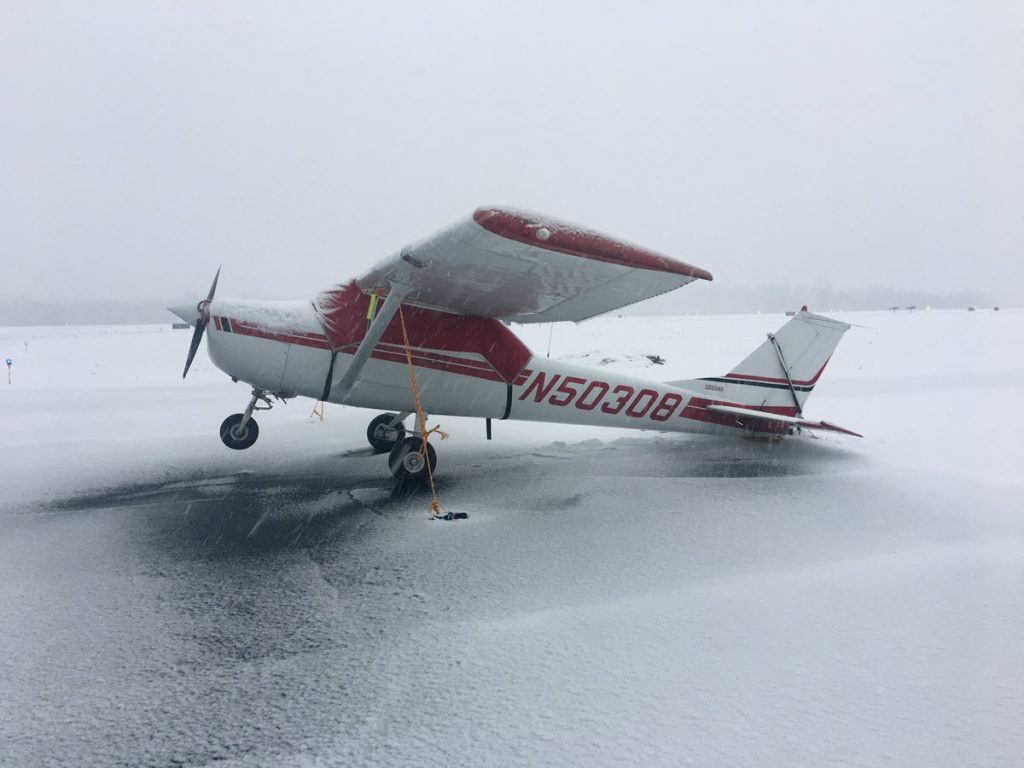
Steve Tilford, The Villages, Florida, 1964 150D
Mind the baffles in the exhaust, as they generally fall apart over time. Carefully check the firewall for previous damage or bad repair.
Carl Stidsen, Tolland, Connecticut, 1978 152 II
Check and confirm the prop serial number. Having to buy a new metal prop or pay for a periodic inspection can be an expensive introduction to “cheap flying.” Also, check the brake status. In some cases, the original parts manufacturer has gone out of business, so replacing brake parts may require a complete rebuild or a whole new setup.
Miscellaneous Tips
Michael Richardson, Greenville, Kentucky, 1976 150M
The 150F was the plane I used to get my PPL. A friend and 150 owner said, “Flying your 150 will become like putting on your favorite pair of jeans.” That’s true. The views we have seen!
Marshall Patterson, Tuscumbia, Alabama, 1967 150G
The 150 has great low-speed manners, even without STOL mods. In fact, if you don’t have a special need for mods, I wouldn’t waste money on them.
Jerry LeCroy, Huntsville, Alabama, 1974 150L
The 150 has quite short legs. Planning IFR flights to keep legal fuel reserves used to have me really studying charts.
Alex Cywan, Camarillo, California, 1969 150J
The 150 is a fantastic, nimble (although slow) airplane. Flown well, it’s a capable IFR platform. You can easily make it a beautiful fair-weather flyer that does everything a 172 does.
Sid Ege, Carlisle, Pennsylvania, 1968 150H
A 150 is more than a pancake breakfast plane. It can be a cross-country adventure plane. Go fly it; you will not be disappointed.
Steve Tilford, The Villages, Florida, 1964 150D
It’s a sweet, easy airplane to fly. It has a reasonable cost to keep, and it’s as tough as a brick.
Carl Stidsen, Tolland, Connecticut, 1978 152 II
Spare/replacement parts are becoming a problem like the rest of the inventory.
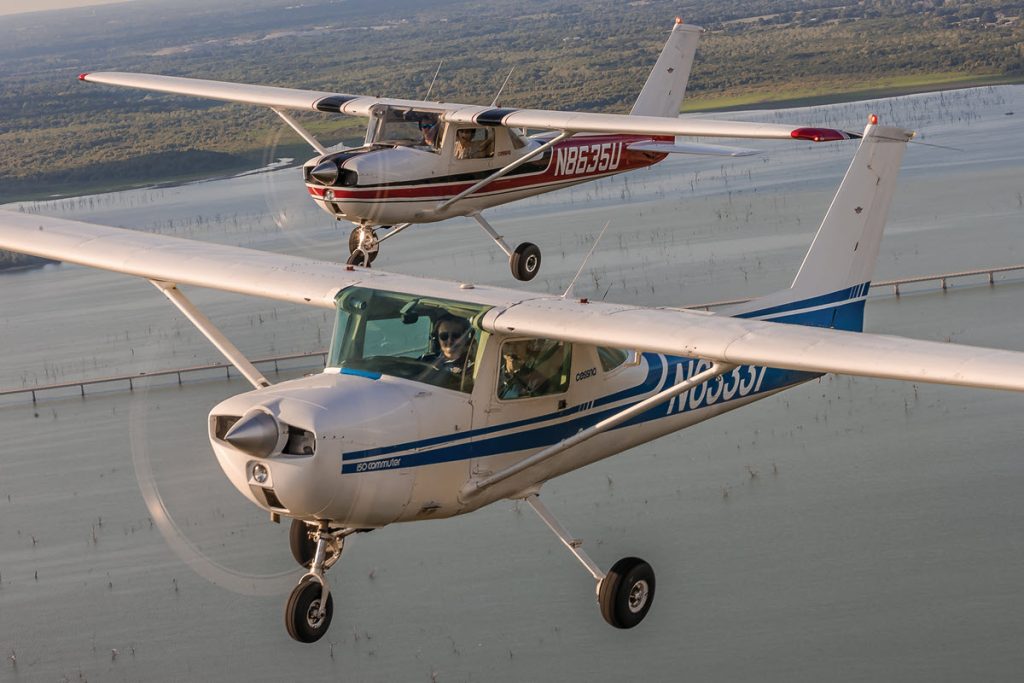
Photo by Jack Fleetwood (www.jackfleetwood.com)
Specifications & Performance
All specs and performance numbers are drawn from official sources, often the aircraft flight manual or the manufacturer’s website. Every vintage airplane is different; do not use these specs to plan a flight.
The rest of this article can be seen only by paid members who are logged in.Have a website login already? Log in and start reading now.
Never created a website login before? Find your Customer Number (it’s on your mailing label) and register here.
JOIN HERE
Still have questions? Contact us here.




